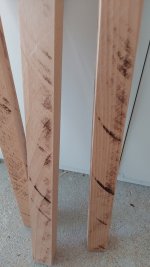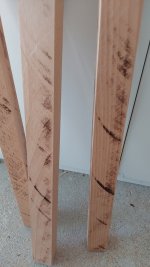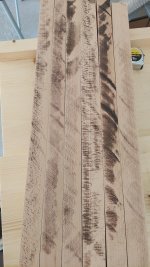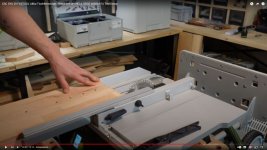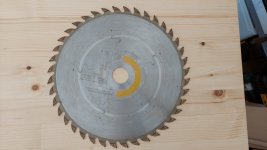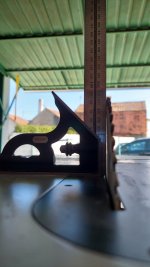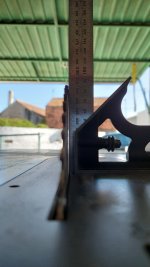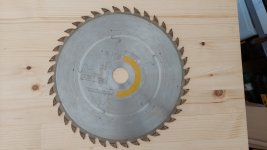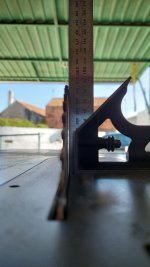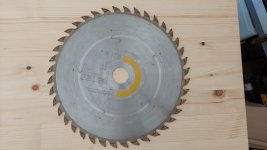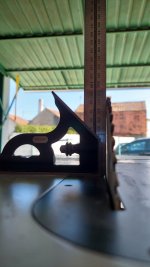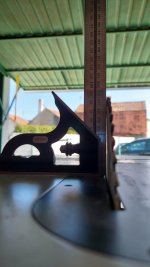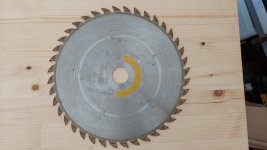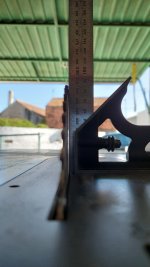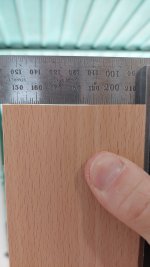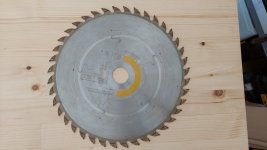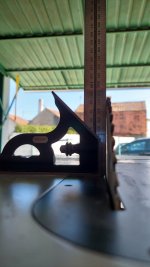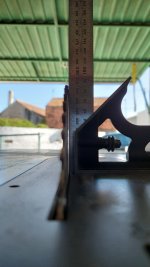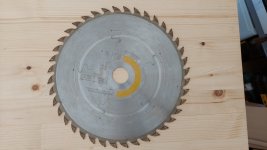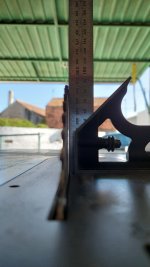antoniomcs
Member
- Joined
- Dec 7, 2021
- Messages
- 34
Hello everyone.
So far I have been using the TKS80 to cut plywood, and it has served me very well.
Very recently I started a new project, but this time in solid beech wood.
And of course I couldn't help but use the TKS80 to cut the pieces I need.
I needed to rip cut pieces about 30mm and 50mm high and 700mm long.
At the beginning I can push the wood well, but from the middle of its length it becomes difficult to push it, because it seems to me that it starts to get too tight between the parallel guide and the riving knife, since the riving knife is thicker than the blade itself.
When I cut beech, the wood gets very burnt.
Is it because I push it too slowly...?
When I finish the cut, you can really notice the riving knife returning to its initial position.
I have cut plywood and yellow pine with 20mm thickness and did not have this problem.
The blade is new.
Another question is about the miter gauge.
It is not easy to cross cut relatively small pieces: 200mm long x 30mm thick x 70mm wide. The cuts rarely stay square.
Do you have the same problem?
So far I have been using the TKS80 to cut plywood, and it has served me very well.
Very recently I started a new project, but this time in solid beech wood.
And of course I couldn't help but use the TKS80 to cut the pieces I need.
I needed to rip cut pieces about 30mm and 50mm high and 700mm long.
At the beginning I can push the wood well, but from the middle of its length it becomes difficult to push it, because it seems to me that it starts to get too tight between the parallel guide and the riving knife, since the riving knife is thicker than the blade itself.
When I cut beech, the wood gets very burnt.
Is it because I push it too slowly...?
When I finish the cut, you can really notice the riving knife returning to its initial position.
I have cut plywood and yellow pine with 20mm thickness and did not have this problem.
The blade is new.
Another question is about the miter gauge.
It is not easy to cross cut relatively small pieces: 200mm long x 30mm thick x 70mm wide. The cuts rarely stay square.
Do you have the same problem?

